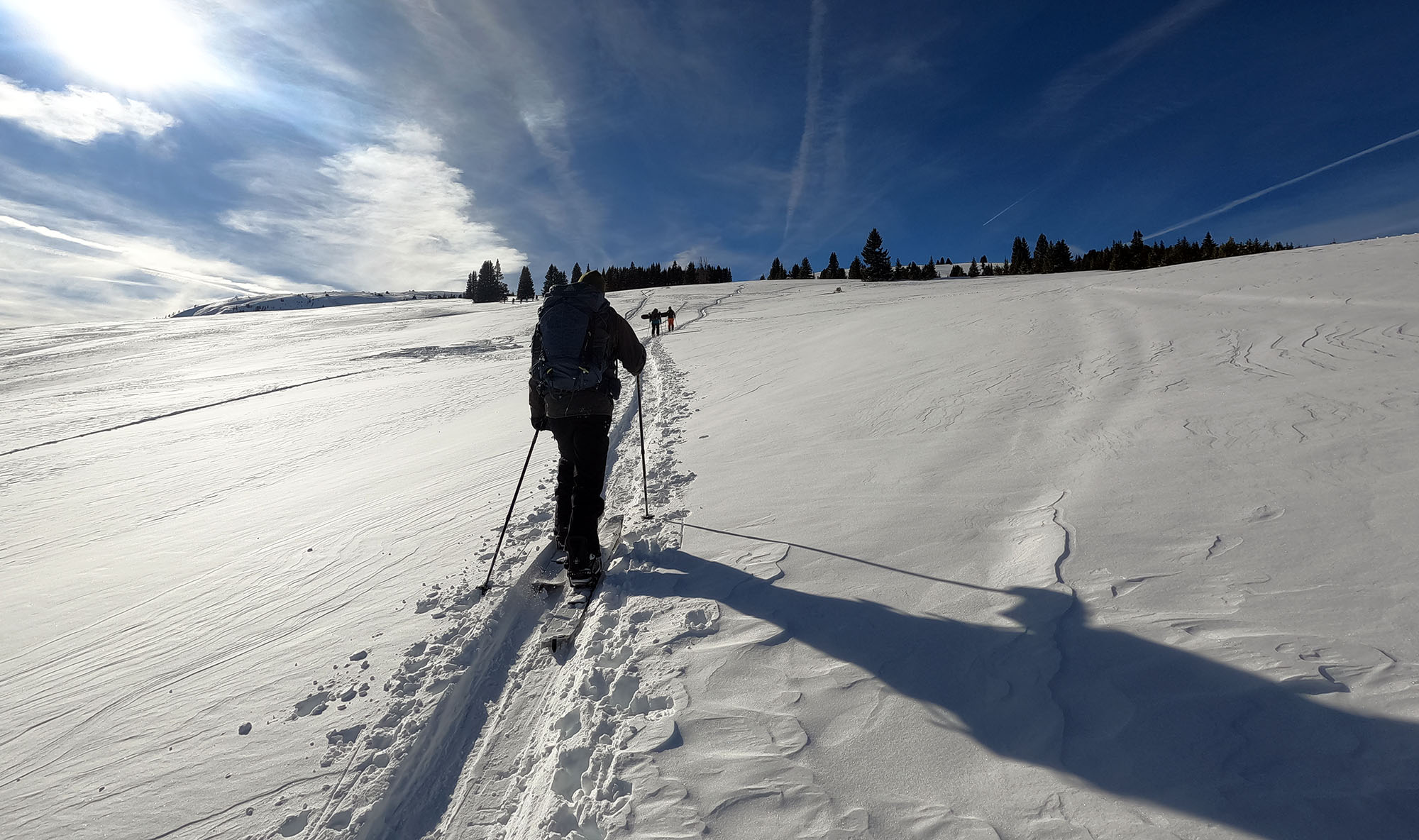December 18, 2022
A cold start
We gathered just beyond the parking lot below Fremont Pass for day two of our AIARE 1 Avalanche Awareness course. I felt nervous and excited. But mostly I felt cold. The sun had yet to climb above the nearby ridgelines and the thermometer read ~0F. In light of this, our instructor had us start up the old logging road immediately. We’d stop a few minutes later, after warming up a bit, to begin the day’s informational components.
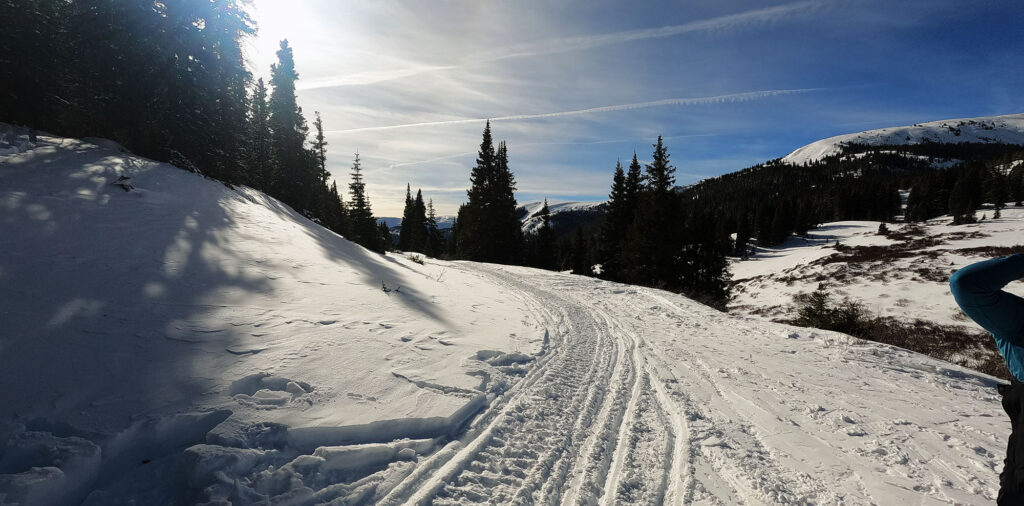
This chilly Sunday marked the culmination of my introductory “avalanche awareness” course. The standardized course was developed by the American Institute for Avalanche Research and Education (AIARE). I’d spent two evenings the prior week attending three-hour Zoom sessions with my “classmates”.
Then we gathered in person on Saturday for an initial day of learning about beacons and the basics of avalanche rescue. Today we’d venture further out into undisturbed snow to learn more about the snowpack and traveling safely through the backcountry.
The Allure of the Backcountry
Let me start by saying: I love resort skiing. I will happily spend eight hours on a Saturday lapping chairlifts and exploring controlled and patrolled terrain. Skiing takes place in winter—on a mountain. It’s cold. Why layer in wilderness risk-taking and heavy sweating?
“On resort” you’re never more than a few minutes away from chicken tendies and a hot chocolate. You can wear as much heavy, warm gear as your heart desires. You can pack light: perhaps just hand warmers and some tiny bottles of Fireball. A backpack? Why bother? There’s sunscreen in the ski patrol hut.
But having lived in Colorado for just over two years, I would inevitably succumb to the allure of backcountry skiing. Before even moving here, I was liable to spend twelve-hour days snowshoeing through rugged wilderness in the northeast. In summer, I spend half my weekends trudging to the summit of Colorado’s tallest peaks. Backcountry skiing seemed like the culmination (unification?) of these outdoor pursuits.
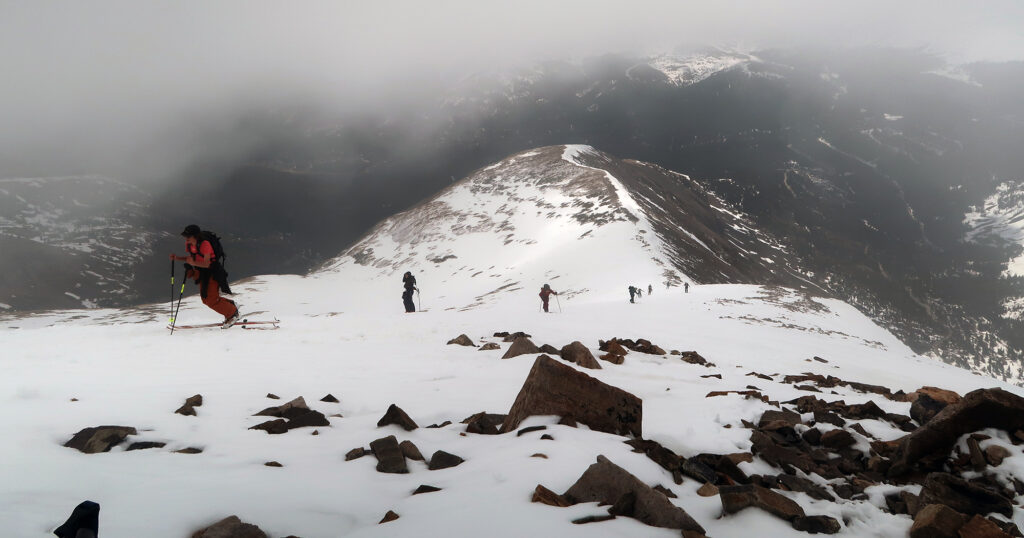
The backcountry is free and open to all (provided you choose public land!). But in many ways, it’s wayyyy less accessible and affordable than on-resort skiing …
Backcountry Barriers to Entry
Several massive barriers stood between me and powder turns atop the Rockies.
First, the gear. The equipment is crazy expensive. You usually need some combination of dedicated boots, bindings, and/or skis. They’re usually more expensive than the front country variety. And that gear already prices high.
The second barrier: backcountry experience. And let’s set aside avalanche experience for a moment. Even then it’s kind of daunting—venturing out into the mountains, beyond cell service, without a ski patrol or marked runs or warming huts. It took me years to warm up to the idea. As an aspiring 46er, skiing in New York’s Adirondacks, I’d often share a lift ride with a fellow hiker (typically a local) who would rave about winter hiking. So I signed up for a great class through the Adirondack Mountain Club dedicated to winter backcountry travel. Then I began some increasingly ambitious winter outings.
The third barrier: skinning. A lot of avid skiers have barely heard of skinning, or “uphilling,” or “alpine touring” … all loosely overlapping synonyms for downhill skiing without the need for a chairlift. This is certainly changing. Pretty much every ski area now allows some form of uphill skiing. And in Colorado, a resort now exists without a single chairlift that charges guests for the privilege of skinning up and skiing down their rolling terrain. And so I started by renting some AT equipment and heading up to Winter Park, to skin and ski on groomed terrain. Having confirmed it was indeed an enjoyable experience, I purchased my own AT skis, bindings, and “skins” and began regularly uphilling on-resort.
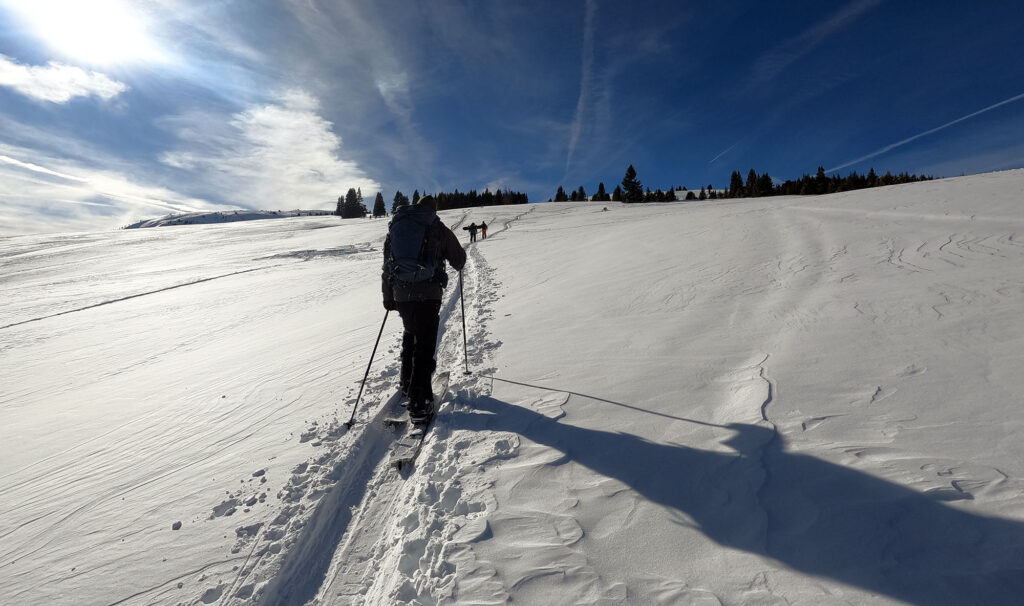
The biggest barrier: avalanche awareness
These building blocks all stack up nicely toward the goal of backcountry skiing. But there remained one giant risk I knew next to nothing about: avalanche risk. Avalanches kill a handful of skiers every year in Colorado and other western states. And the high, dry snowpack in the Rocky Mountains has gained notoriety for presenting risks more persistent and complex than other, “wetter” ranges like the Alps and Sierras.
If you don’t know, don’t go
North American ski resorts spend endless time and money trying to eliminate avalanche risk from their terrain. Snow management teams (groomers), ski patrollers, and even the general public participate in “disrupting and compacting” snow in steep terrain. At Aspen Highlands, locals earn a season pass by stomping up and down the Highland Bowl early season to compact the snow. At resorts all over the west, patrollers drop the rope intermittently on steep terrain early season to let a handful of skiers “cut up” the snow between each storm. Most dramatically, patrollers chuck bombs onto the steepest terrain, literally blasting the snowpack. Sometimes they even use a howitzer.
All this allows clueless folks like me to ski “boundary to boundary” with impunity. We can duck into the woods, huck off cliffs, and shoot down couloirs and alpine bowls. We can seek out wind-loaded slopes, tight gulleys, steep north-eastern aspects, and “powder stashes”.
This can create a false sense of security among skiers regarding “steep and deep” terrain. It can lead us to feel more confident than we should in high-consequence situations. And so at popular resorts like Breckenridge, Park City, and Jackson Hole, you hear of skiers venturing into side-country and backcountry terrain unprepared, sometimes with permanent consequences. No wonder on each and every tram ride at Jackson Hole, the operator ends their safety spiel by saying “If you don’t know …”, to which the packed skiers respond “don’t go.”
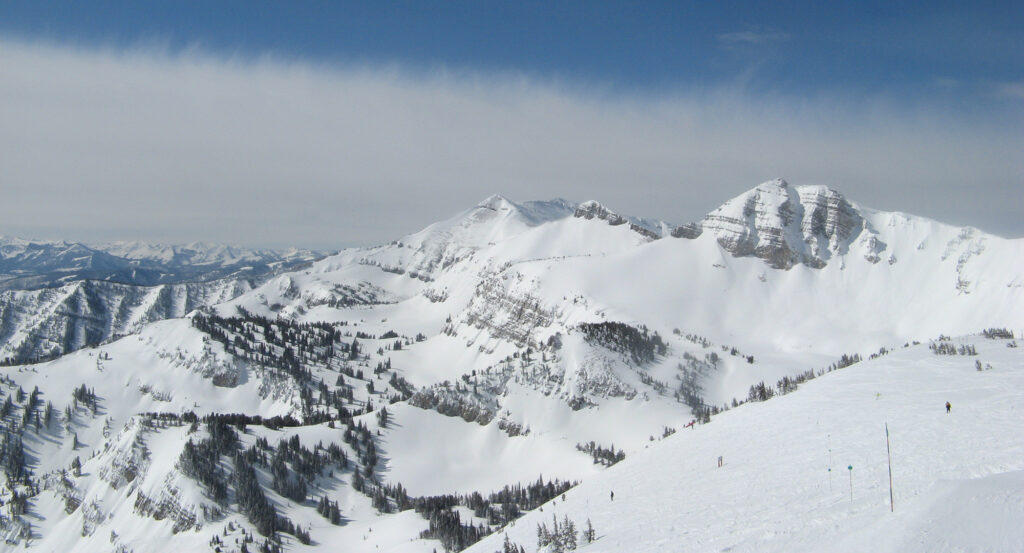
AIARE 1 Avalanche Awareness
The multi-day course I took in December 2022 represents just the start of avalanche education. AIARE has developed a companion rescue course (also appropriate for beginners) along with follow-on courses for both recreationists and professionals with more experience.
My goals for taking AIARE 1 were simply to gain awareness of the risks and understand how to entirely avoid avalanche terrain. To paraphrase Mitt Romney, I was interested in eliminating “unknown unknowns”. The course was not intended to transform me into some sort of high-angle terrain powder hound. Only through numerous outings with folks more experienced could I begin to “step it up” into that kind of “consequential terrain.” And I was in no rush to get there.
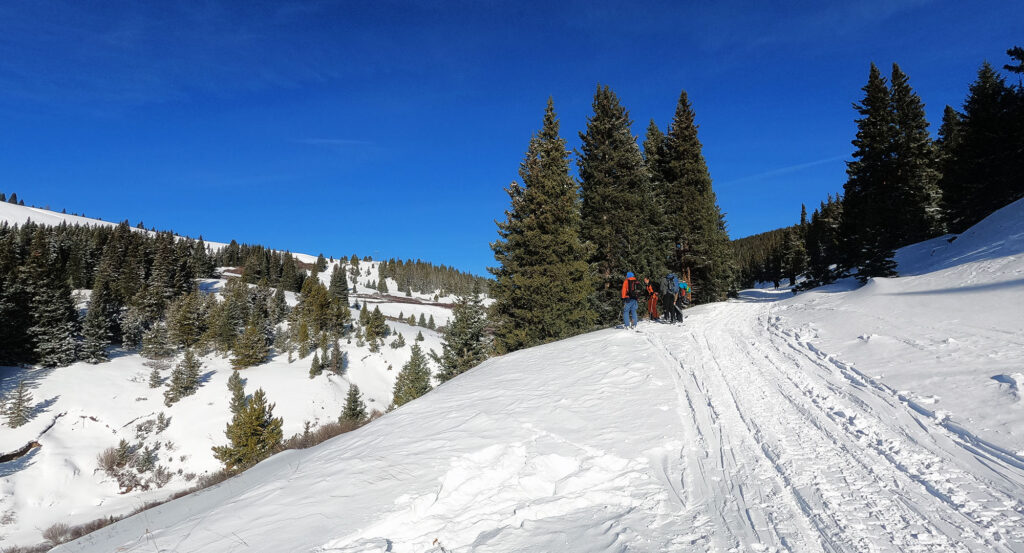
And so I found myself skinning up an old logging road, above Fremont Pass in the heart of Colorado’s ski country. The locale felt fitting as we were just a dozen or so miles from Camp Hale. Camp Hale served as the training ground for the 10th Mountain Division, a skiing-oriented army corp that fought on the Italian front in WWII. Today skinning and alpine touring feel like a niche hobby compared to the massive American skiing industrial complex. But in the 1940s, resorts with rope tows or chairlifts were extremely rare. The men who fought in the 10th would come back to the US and help develop modern resorts like nearby Vail.
Shooting Cracks
Our instructor brought us a mile or two up the snow-packed road, before veering us off into the trees. We traversed through an open meadow with a modest drop-off towards a ravine. Despite nearly a hundred days on skis in Colorado, this was my very first time in completely undisturbed early-season snow. Avalanche risk was “high” that day, meaning skiers could easily trigger slides on steep terrain.
In that meadow of fresh snow, we had two of the three necessary ingredients for an avalanche that day. First, we had an “avalanche problem” … in this case a slab layer beneath fresh snowfall that could “release”. Second, we had a trigger (our stomping around on skis and split boards). The missing ingredient was “terrain” … the meadow had a gentle slope but it wasn’t steep enough to slide.
Soon enough, someone managed to break the “persistent slab” beneath us. We heard a deep “whoomph” noise, as a broad area of snow collapsed just an inch or two. And we saw cracks shoot out into the meadow in front of our skies. It reminded me of the squirrel from Ice Age, trying to jamb an acorn into a glacier.
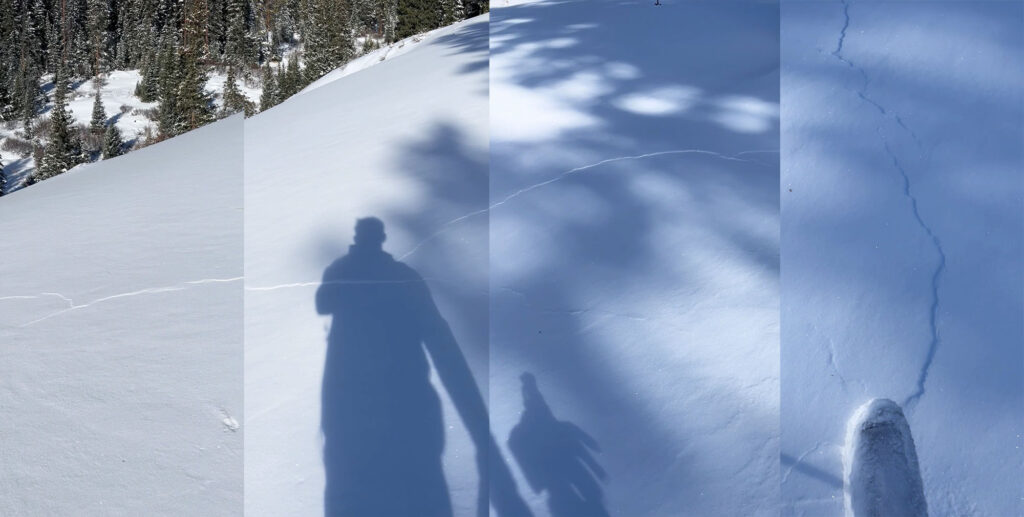
Studying the snowpack
The brief detour through that meadow of fresh powder provided a poignant lesson for me. I had never seen snow behave that way. 32 years of skiing had never brought me onto multiple layers of undisturbed snow. Instead, it always involved powder sitting on top of moguls or corduroy—snow on a solid foundation. This was far more fragile.
We ventured higher up into the open bowls above the roadway. Our team of a half dozen students had “planned” a route the night before. Though I use the word “plan” liberally, as it involved a lot of nudging and prodding from our instructor. Our uphill and descent routes would entirely avoid steep terrain. This just wasn’t the day for that.

Thankfully the day grew warmer as the sun climbed into a clear blue ski. It was beautiful out here. We stopped many times for discussions and mini-lectures from our instructor. I took the course through Apex Mountain School, based in Avon, Colorado. But there are numerous guiding outfits and educational institutions providing AIARE courses throughout the West.
Digging Snow Pits
Near a wind-loaded bump in the terrain, we stopped for the signature “snow pit” section of the course. Our instructor got out his shovel and carefully carved some flat walls into the snow. He pointed out the layers created through storm cycles and sunny/windy days in between. He placed the shovel atop square cuts and tapped until the failed. Hundreds of observers dig pits like this to test the snow throughout the winter season. That data finds its way back into computer models used to forecast avy risk.
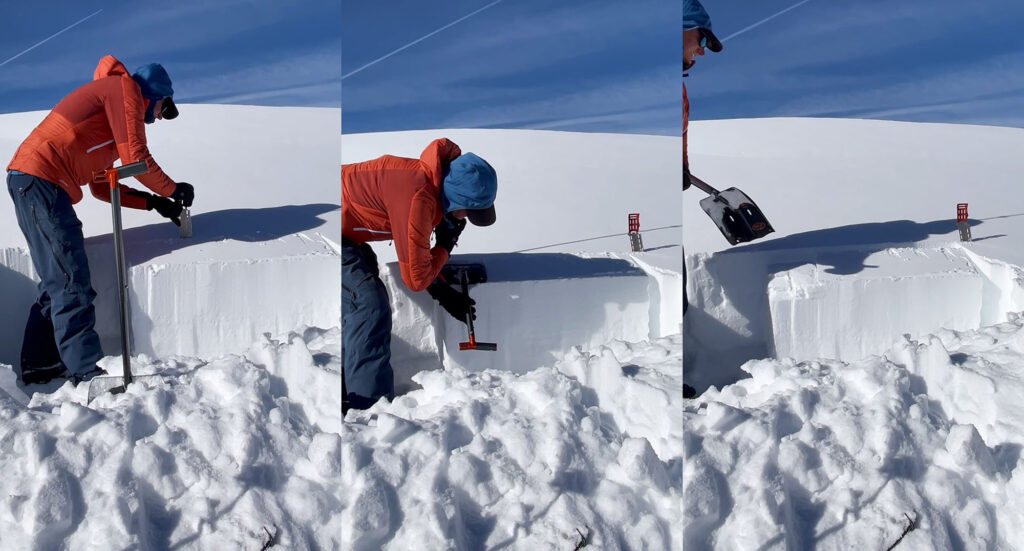
We learned that snow pits are one component of forming constant observations as you traverse the backcountry. As we moved up the mountain, our instructor called attention to things as wide-ranging as hoar frost alongside the roadway to wind-scoured slopes on the high ridgeline. He dug quick-and-dirty pits occasionally by hand. And pointed out slides on steeper slopes in the distance. There was a lot to observe and take in.

The descent
The afternoon sun began to wane. The winter solstice had passed just a week earlier, and the days were short. We pulled the skins off our skis and split boards. We fiddled with bindings, donned helmets, and prepared for a fun descent down a slope around 30 degrees steep.
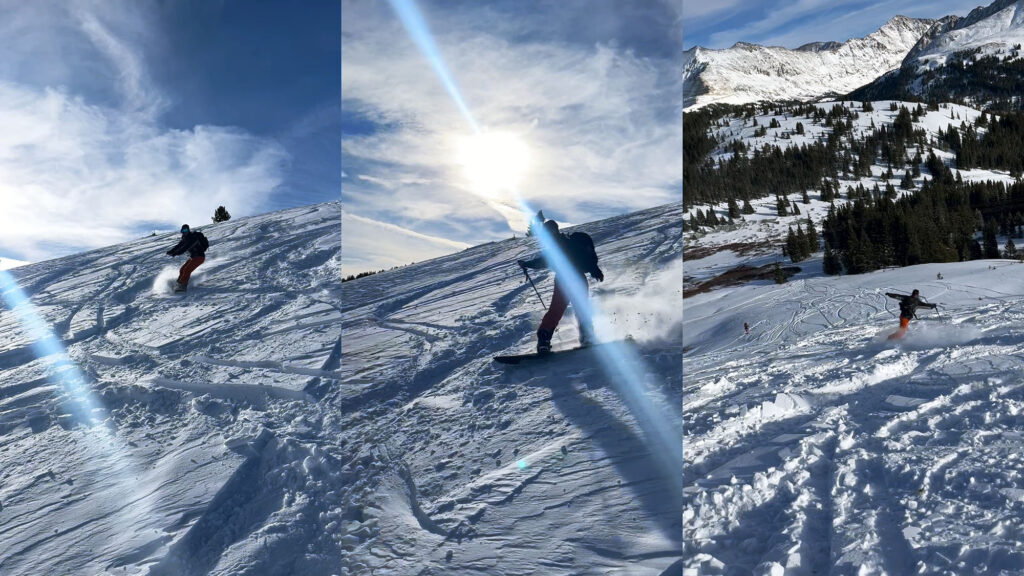
The descent took a lot longer than I had anticipated. We reached the forest service road pretty quickly. But the narrow path was somewhat choked with traffic. A lot of AIARE instructors (and backcountry guides) were out that day. Some of the groups had stronger or weaker skiers. We descended the road in short bursts. It felt a bit too I-70-ish for my liking.
But overall the day felt fun, exciting, and rewarding. Back at the car, I was relieved to have made it through the day sans frostbite and now armed with a small bit of touring experience.

